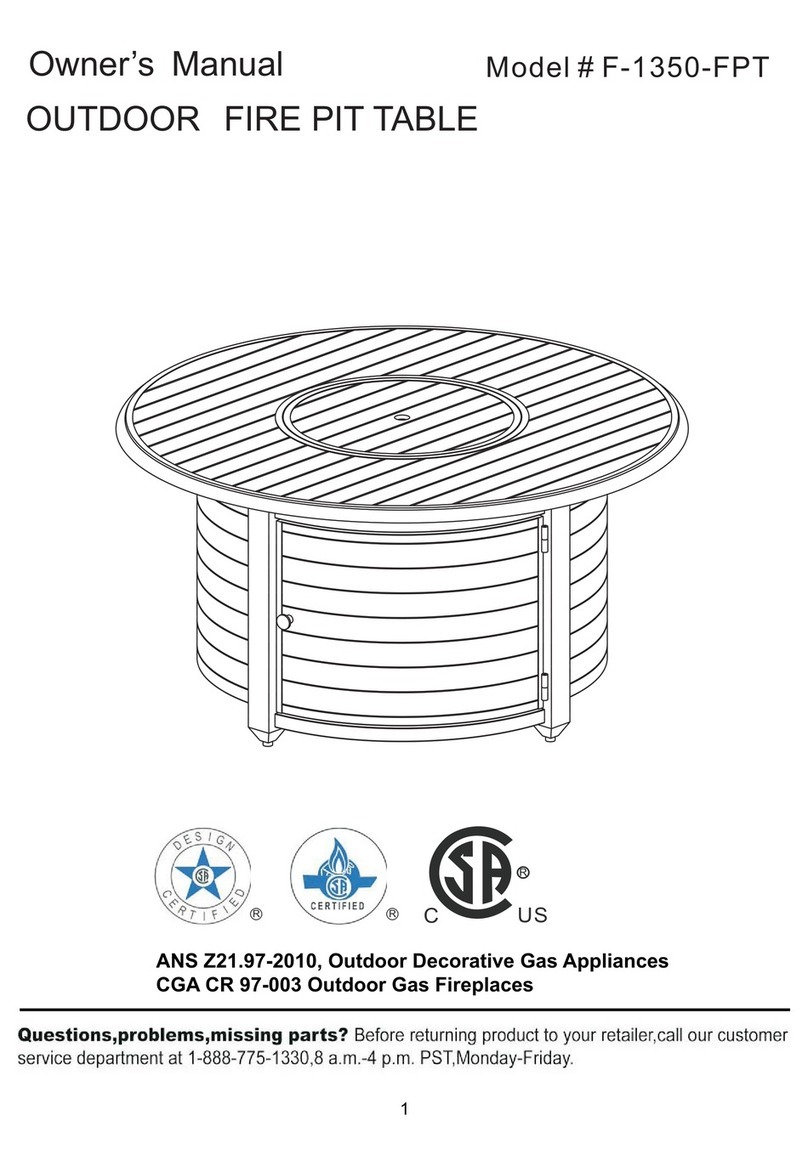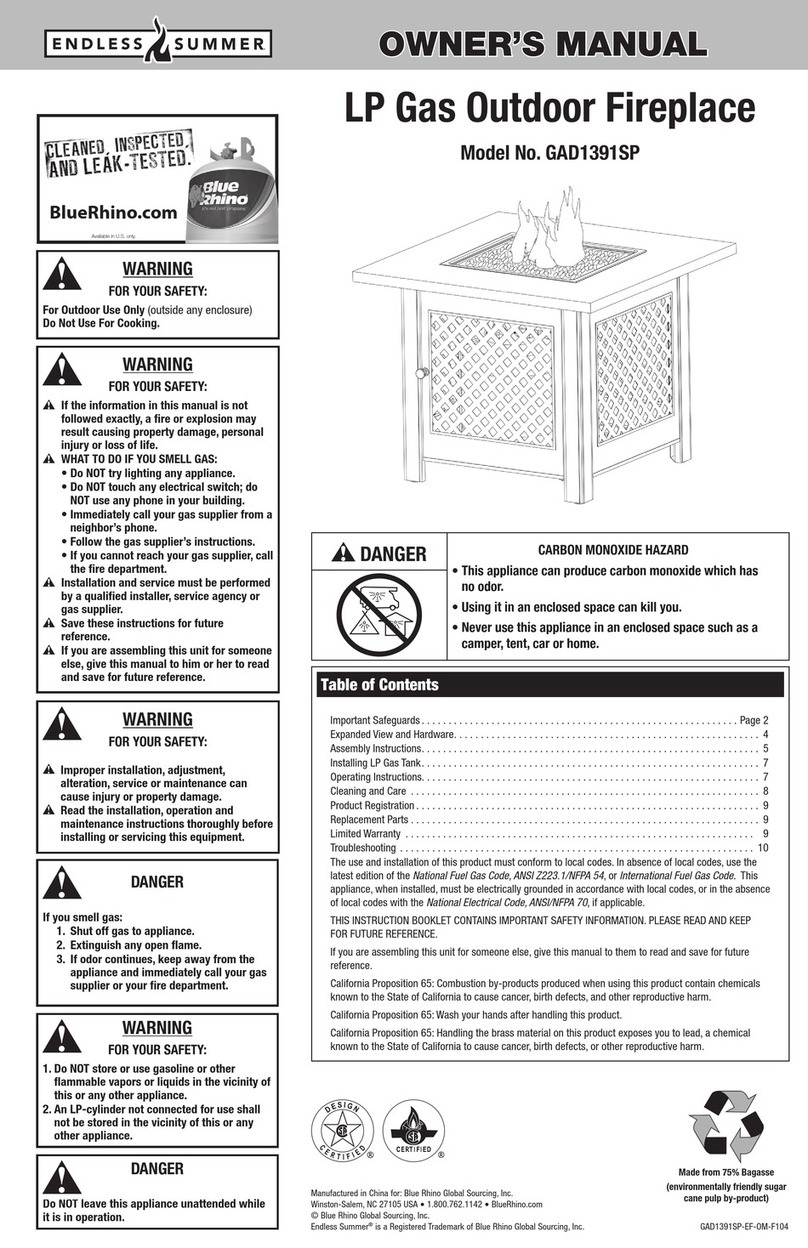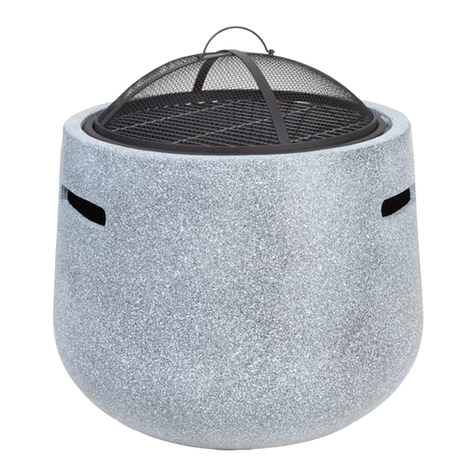Gibraltar Built Flare Premier Metro User manual

Flare Outdoor fire
Installation Guide
Premier
Metro or Tuscany
Please read thoroughly before commencing installation
Manufacturers’ Notes
•Sika fix or a similar Anchor fix product is used in the assembly of this fireplace Please read
the manufacturers’ instructions carefully
•Bear in mind Anchor fix has a pot life, so make sure you have everything ready before you
start
•Use OSH approved lifting equipment and avoid at all times working under suspended
modules
•It is important that this fireplace is not run as an open fire until both the fire bricks and heat
shields have been installed
•Allow Anchor fix 48 hrs to cure before running the fire place
•Both the fire bricks and concrete modules will have moisture in them as a result of the
manufacturing process This needs to dissipated slowly otherwise they will crack as the
moisture expands and turns to steam The only way this can be done is with six or eight
small fires where the heat intensity slowly increases Starting with a fire that brings the fire
bricks up to warm to touch temperature and then progress with the following fires until the
concrete modules are at a warm to touch temperature
Every care has been taken to ensure that this product has been constructed to the designer’s
specifications Prior to shipping the fire place has been assembled & disassembled and a
comprehensive check of the kit set was completed to ensure that all parts were present
Tools & product required
•spade or shovel
•level
•tape measure
•vise grips
•rubber mallet
•sash cramp
•caulking gun
•ladder
•wheel barrow
•two swift lift devises & chains

•10 X 20kg bags of handy crete 17MPA [For footings]
If fitting fire bricks
•concrete cutting blade on either a drop saw, angle grinder or power saw
Installation
1 Start by become familiar with each modules function and placement within the structure [See
plans] Note: If there is water in the holes on the top of the concrete modules this needs to
be blown out and allowed to dry before assembly
2 Ensure that the location for the fire place is level, free of top soil and has a stable building
base
3 Mark out on the ground the footprint for the two wood boxes, with each module being
1360mm x 720mm
4 Two footing holes need to be dug on the left and two on the right This means two holes for
each wood box on the outer ends [See plans] These holes need to be a minimum of 500
mm deep and 300mm wide with an under cut at the base Size will depend on site conditions
Make the holes wide enough on the outside edges so that you can pour the concrete into the
footings with the wood box module in place This footing system is designed for “good
ground” as defined in 3604
5 Lift the first wood box high enough to enable the two footing rods to be screwed into the
threaded sockets on the underside corners & then tighten firmly
6 Lower the wood box into position checking that the rods are central in the holes and that the
unit is level both ways You need to spend time getting this part right Then repeat the
procedure for the second wood box Laying a piece of flat galv under the joint can make it
easier to slide the two boxes together
Note: The concrete modules are tapered in order to get them out of the moulds during
casting This mean that there will be a small gap at the rear when the two wood boxes come
together
7 Now check that both wood boxes are level and aligned and that the bolt holes match
8 Bolt the wood boxes together with the supplied galvanised bolts ensuring that you have
washers on both sides and tighten firmly The long bolts go in the back holes
9 Fill the footing holes to the top with 17 MPA concrete
10 Lift the fire box to a height that allows you to screw the four 10mm x 100mm threaded rods
into the underside corner sockets Tighten firmly
11 Make sure that the holes on top of the wood box are clean and dry and fill them with anchor
fix
12 Lower the fire box into place and align A sash cramp and rubber mallet may be needed And
in some cases you may need to tap the pins to align with the holes
13 Check again for level and if adjustment is needed use a fine wedge to hold it in place until
Anchor fix has cured

14 Screw the threaded rods into the base of the chimney & tighten Clean and then fill each of
the fire box holes with Anchor fix and lower the chimney into place
15 Check that the chimney is sitting down on the fire box and make sure that all surfaces line
up A sash cramp and rubber mallet may be needed Check again for level and if adjustment
is needed use a fine wedge to hold it in place until Anchor Fix has cured
16 If bevels for the top are part of the order, apply eight generous globs of Anchor fix to the top
of the chimney and lift bevels into place and align the front and sides with a 20mm over
hang The back should be about flush
17 Installing the fire bricks
Note: We encourage tight stacking and not mortar to hold the bricks in place Over the years
we have found that it is inevitable that the mortar will crack and shrink and then result in lose
bricks So take the time and cut them tight If you want you can use a little Anchor fix on the
bricks on the side walls
a) Make sure the hearth is clean and free of debris, and then start laying the bricks on their
flat along the back wall and then lay forward to the front of the fire box Use a small bar
against the side wall to help keep the rows tight Alternate the gap at the end on each
row and put a little bit of sand or mortar in the gaps to keep the rows tight
b) Before you lay the front row you will need to sit the ash guard in place and then lay the
last row behind it The weight of the fire bricks will hold the ash guard in location
c) Make sure the ash guard is sitting back flush against the bricks and then start laying the
side & rear wall bricks on their edge to four rows high See brick plan The fifth row of
bricks is only on the back wall
d) Now that you have laid all the bricks remove the front bricks off row 2,3,4 as well as the
brick behind them and lay them face down on the hearth and apply a small amount of
anchor fix to each corner then relay Then repeat the same on the other side wall If you
want you can run a little bead of anchor fix down the front of the bricks to help fix them
to the concrete
18 If the fire place is not going to be plastered, the joints or any chips that may have occurred
during construction can be repaired with Ramset Magi patch
Warning:
Allow at least 48 hrs for Anchor fix to dry before commissioning the fire place
The first ten fires should be small This allows for the fire bricks and the panels to cure If at any
stage the concrete panels begin to sweat while the fire is running, the fire needs to be shut down or
relocated in the fire box to dissipate the heat during the curing stage
Failure to do this could result in fire bricks or panels cracking
Congratulations on your successful installation of the Flare outdoor fire by Gibraltar uilt.
This manual suits for next models
3
Table of contents
Popular Outdoor Fireplace manuals by other brands

Canvas
Canvas LFT1224PST-A Assembly instructions

Landmann
Landmann Bromley 21860 Assembly and use instructions

Bond
Bond PADDOCK LANE HYFP50087-12 owner's manual
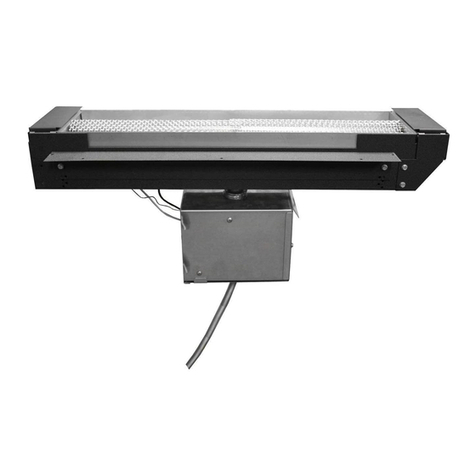
Firegear
Firegear FPB-24LTFS-N Installation and operating instructions
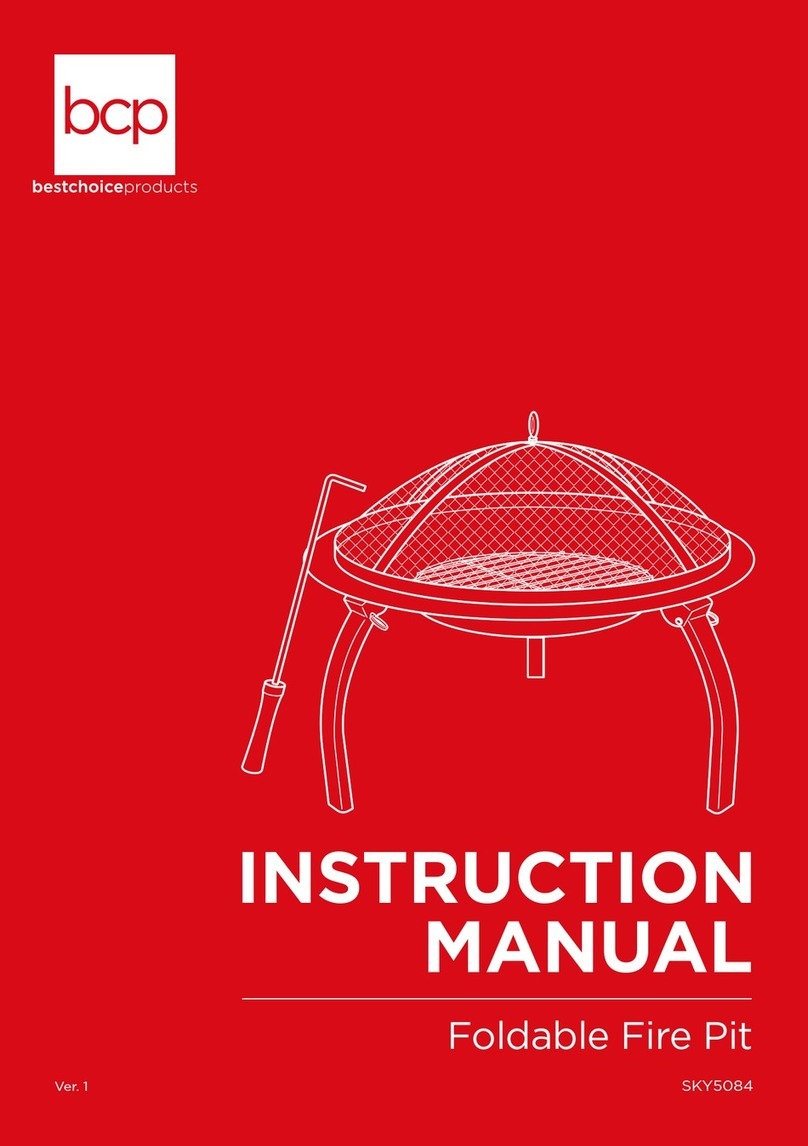
BCP
BCP SKY5084 instruction manual

MHSC
MHSC ODSR36A Installation and operating manual
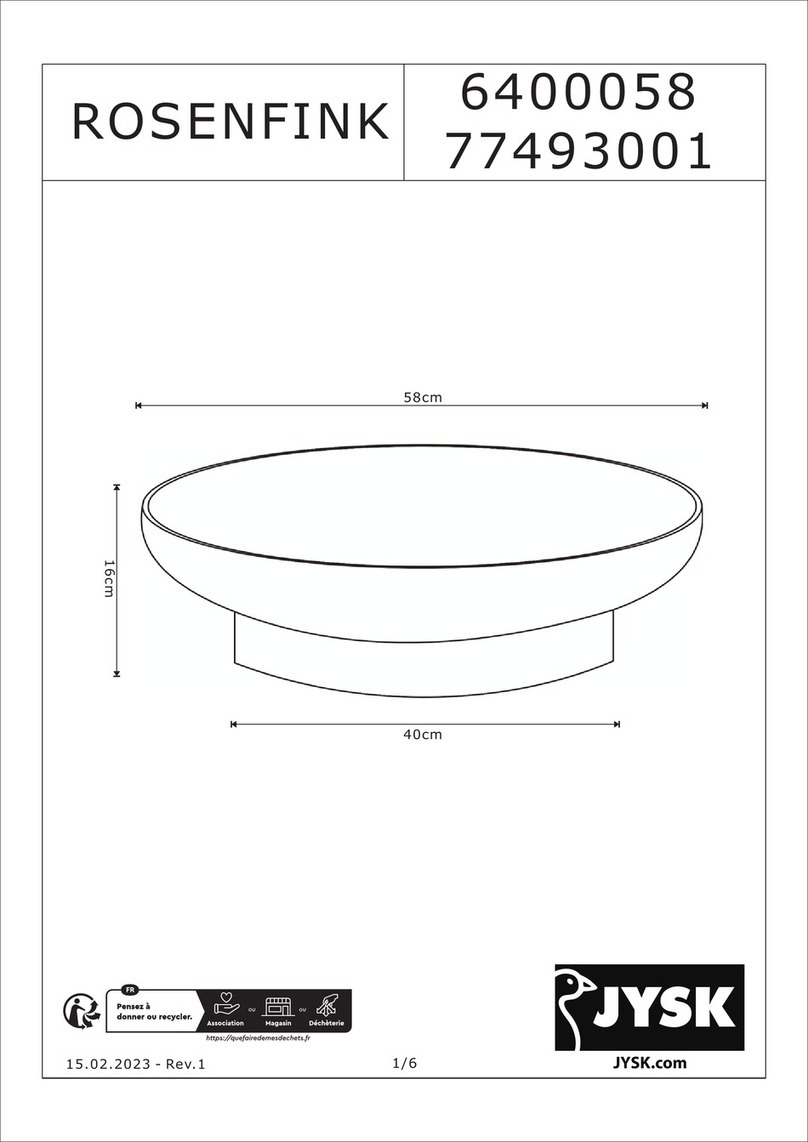
Jysk
Jysk ROSENFINK 6400058 77493001 quick start guide
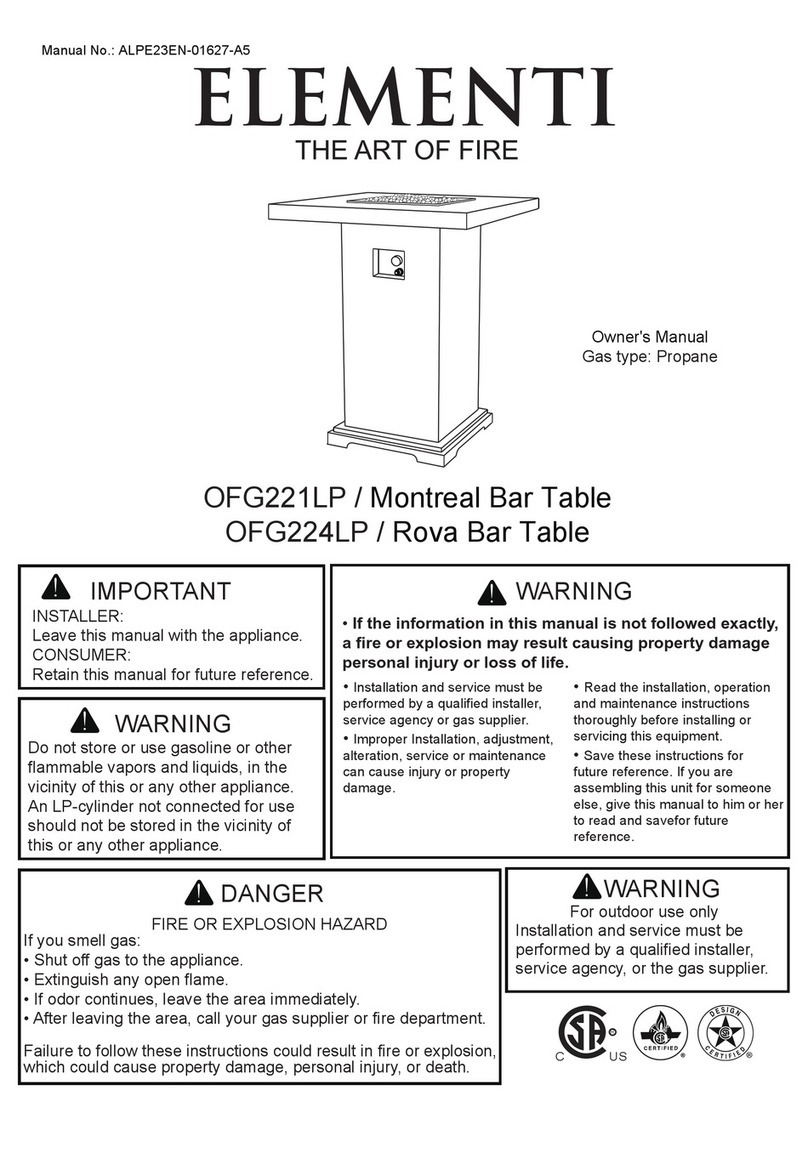
ELEMENTI
ELEMENTI OFG224LP owner's manual

Firegear
Firegear MSI-BSMTI Installation and operating instructions

Outdoor GreatRoom Company
Outdoor GreatRoom Company Kenwood KW-1224-19-K installation instructions
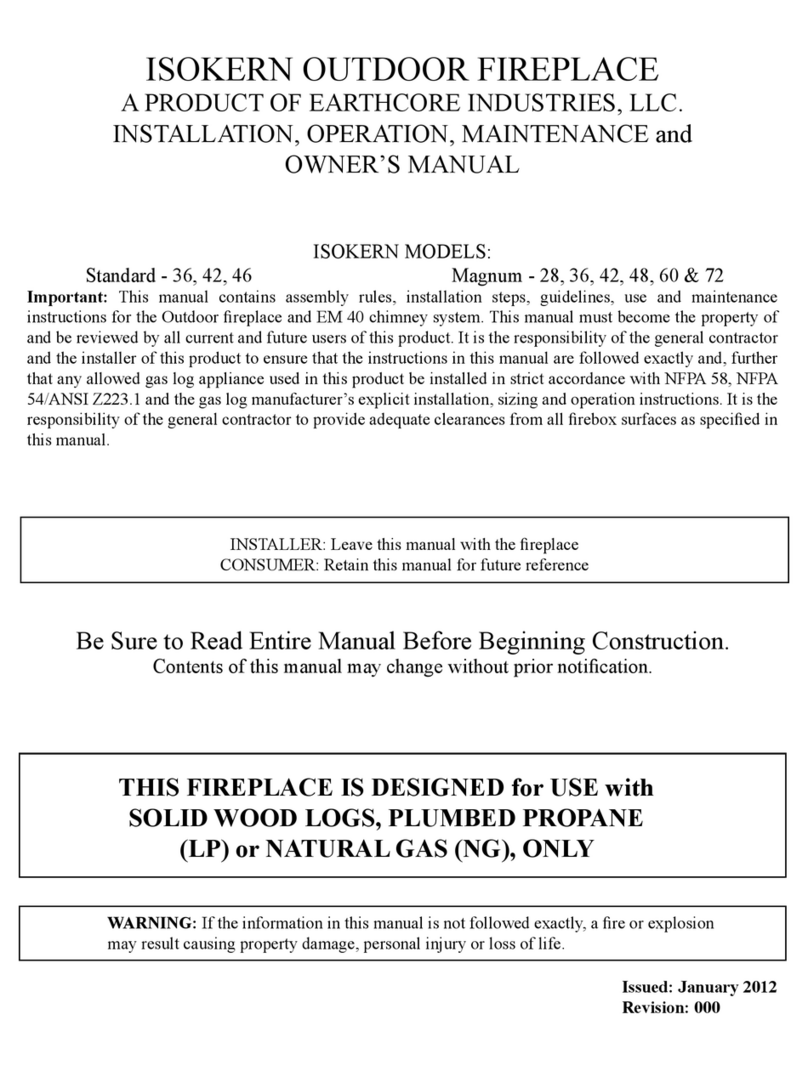
EarthCore
EarthCore ISOKERN Standard 36 Installation, operating, maintenance and owner's manual
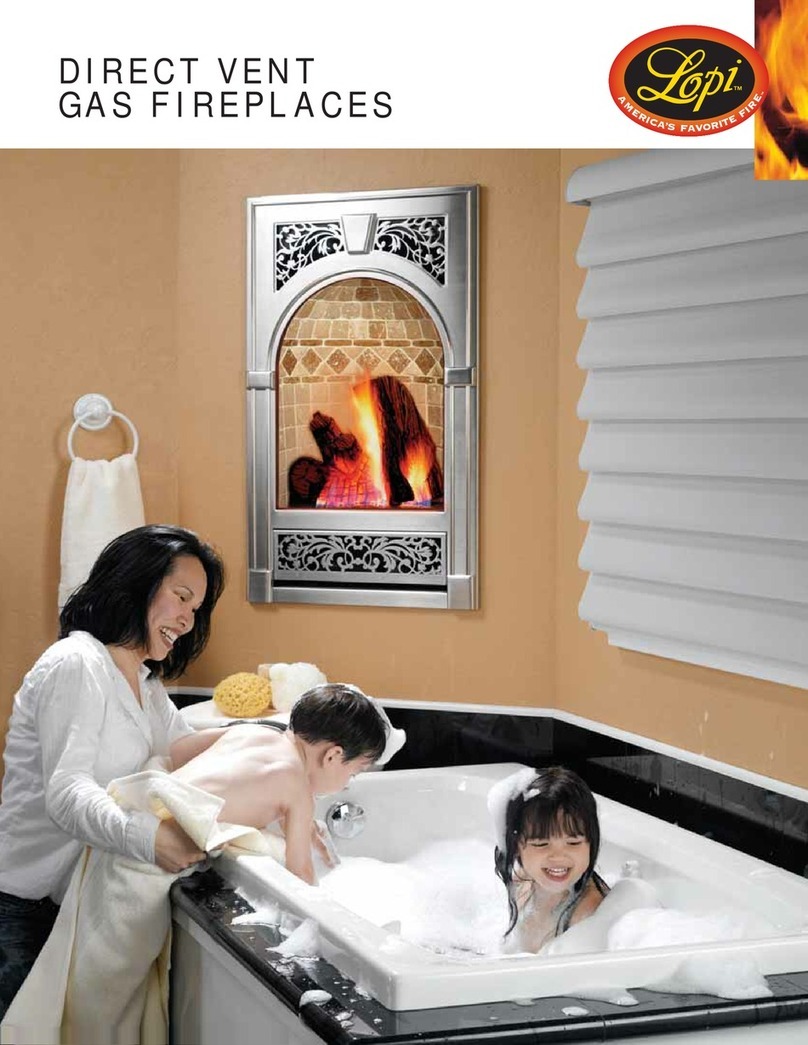
Lopi
Lopi 21 TRV brochure


